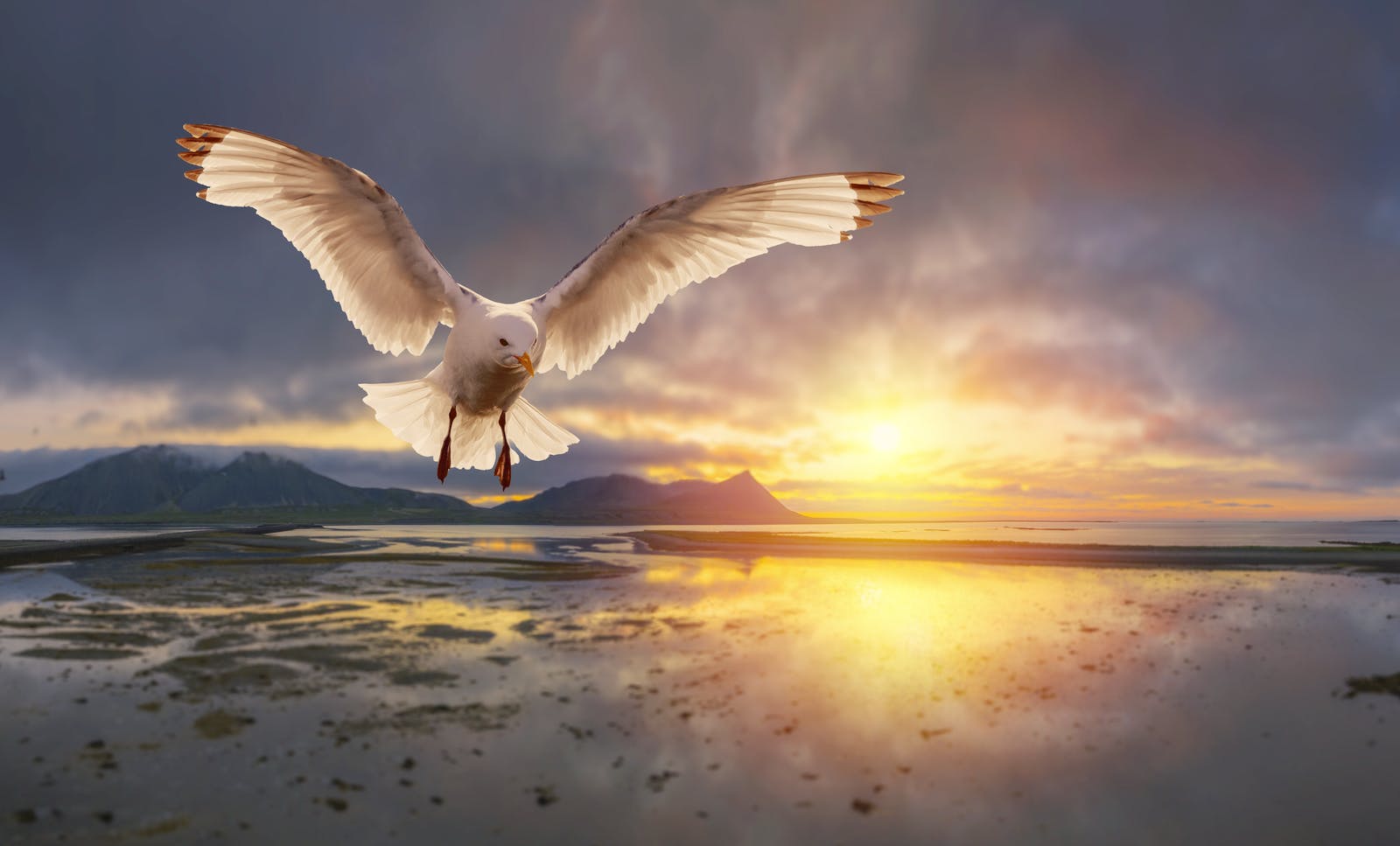
Spot the Black-Legged Kittiwake
There are two species of kittiwakes: the red-legged, Rissa brevirostris, only found in North America, and the black-legged, Rissa tridactyla, found in North America and Europe, including Iceland. The kittiwake belongs to the gull family (Laridae). It has a special status within the family as it feeds only on items from the sea but does not consume garbage, eggs, or stalk young of other bird species as her relatives do. Therefore, the kittiwake is considered a peaceful bird and is popular with humans.
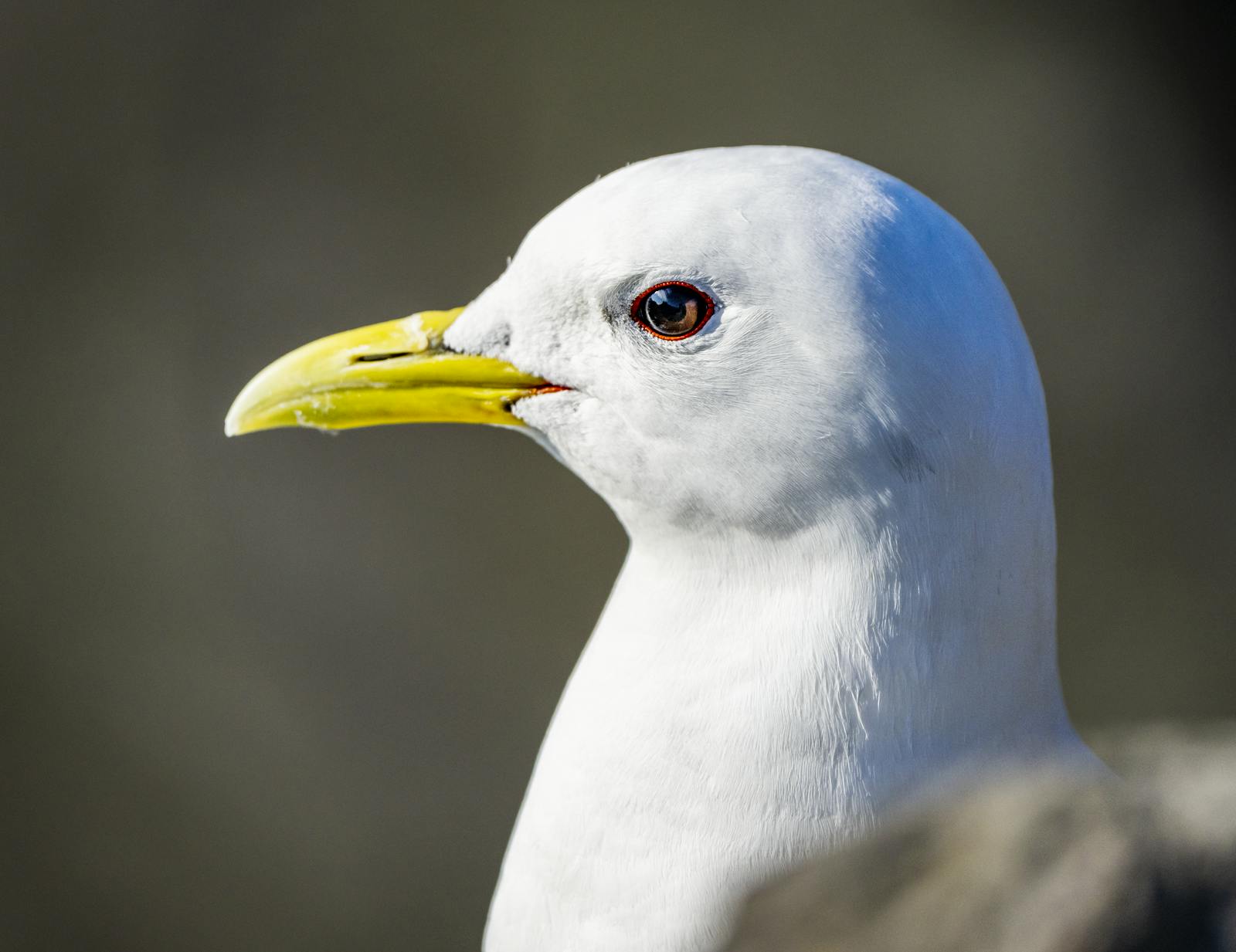
Embark on a thrilling journey to uncover the enchanting secrets of Icelandic nature and wildlife at Reykjavík's Perlan Museum. Explore a world of exciting activities that allow you to dive into the wonders of Iceland. Designed for everyone, this unique experience brings together the beauty and nature of Iceland in one fantastic place at the Perlan Museum. Discover more about the exhibitions at Perlan here.
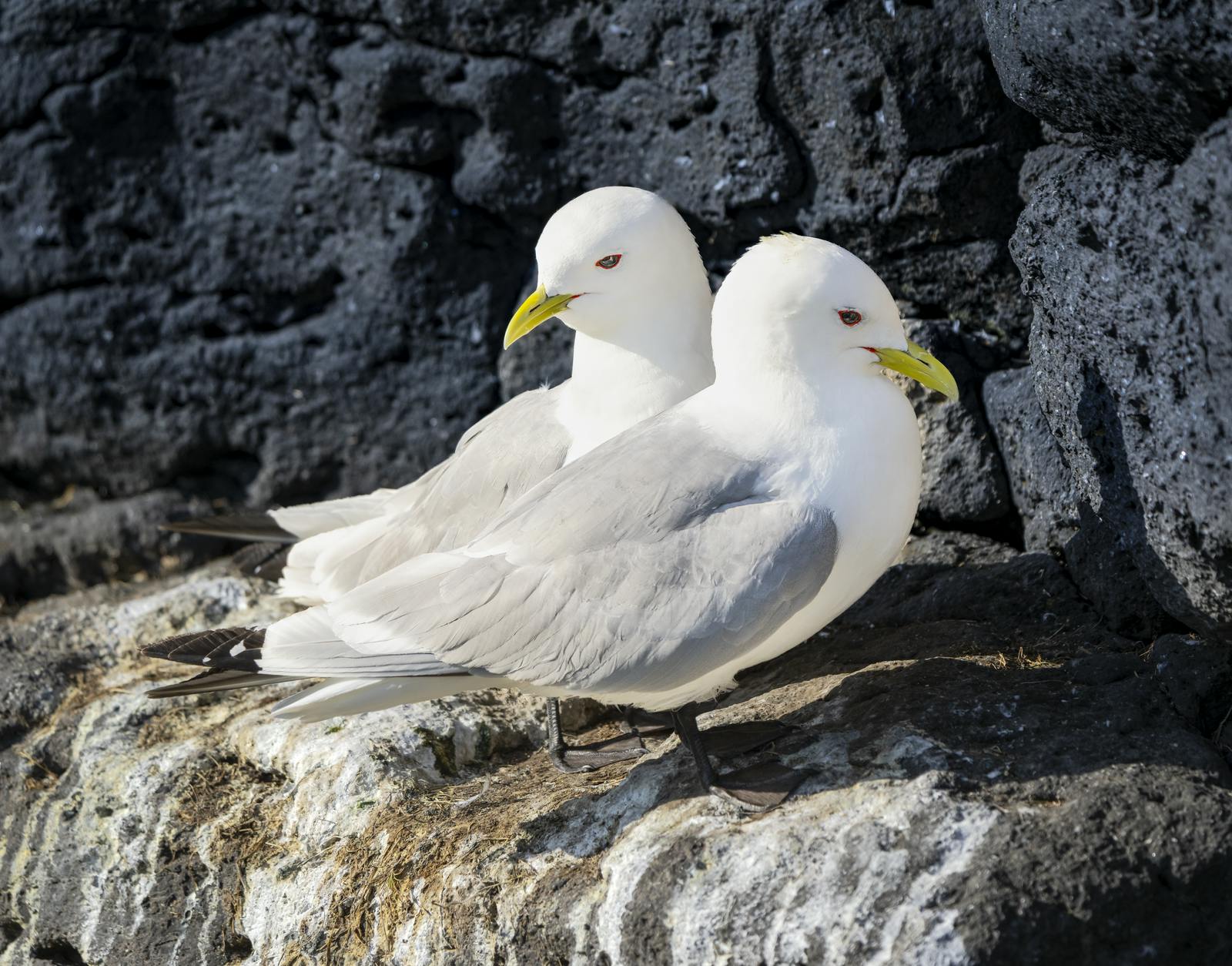
The Kittiwake is a Small Gull
The delicate kittiwake weighs only about 398 grams (14 oz), the length is about 38 centimetres (15 in), and the wingspan is about 1 metre (39 in). The bird is a very good flyer, can glide long distances, dives and shows aerial acrobatics.
The kittiwake is white with a grey back and black wingtips. Its feet are black, but its beak is yellow on adults and black on juveniles. Juveniles in their first two years have more black feathers in their plumage than adults, with stripes on the wings and tail and smudges on the head. The winter plumage of adults resembles that of juveniles, but the kittiwake becomes mature at four years old.
One of the First Spring Arrivals: Migration and Nesting Habits
Few people notice when the kittiwakes arrive in Iceland after a long migration but the first birds appear in February. The number increases and in March most of the population has arrived. The male investigates the breeding site and prepares for the arrival of the female. Kittiwakes are monogamous, and relationships can last for many years. They are loyal to the nesting site which is a small area in steep cliffs or islands. Kittiwakes colonies can be gigantic, with thousands of birds breeding in the same cliff.
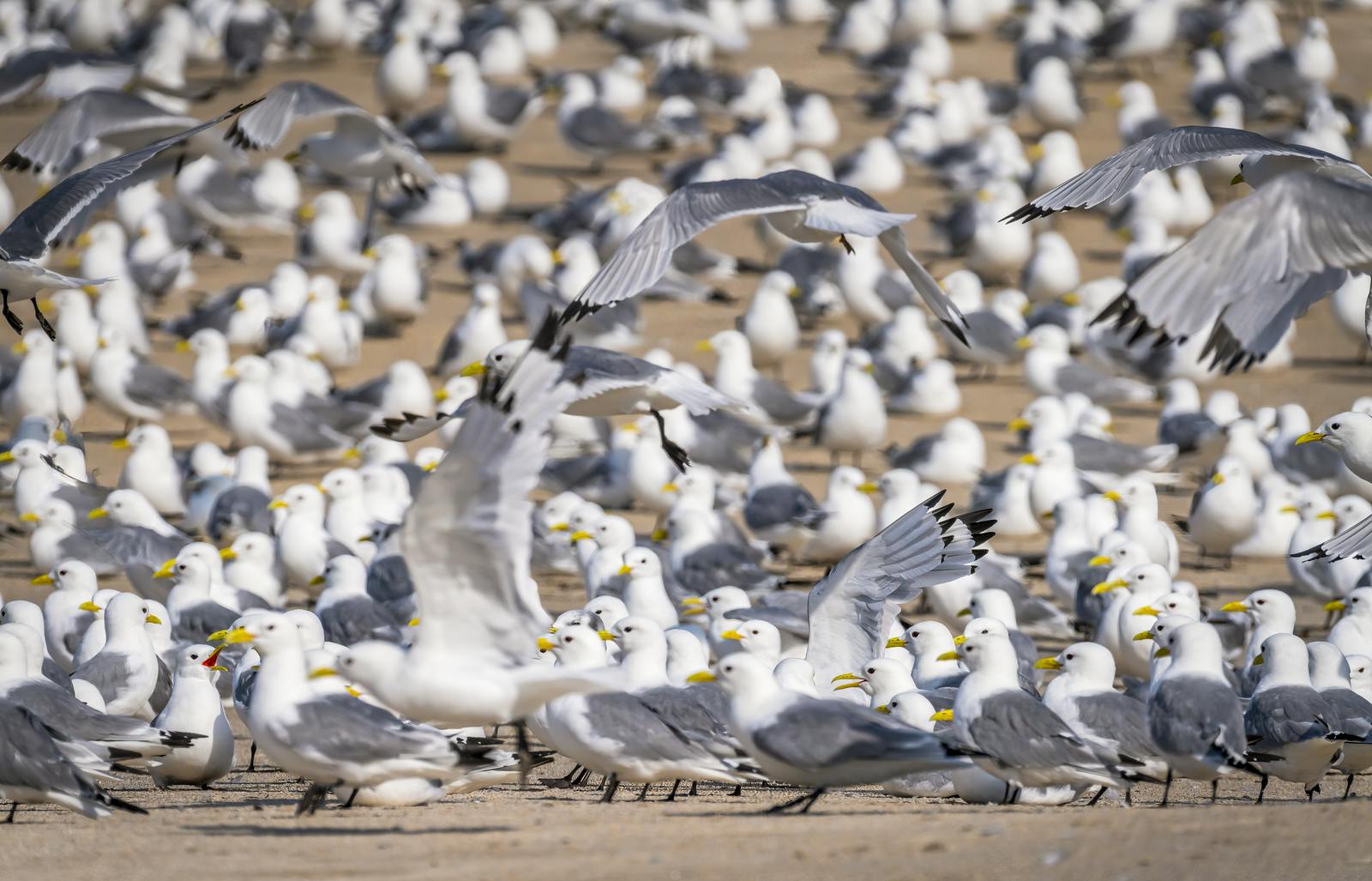
The Nest is a Strange Phenomenon
When spring arrives and ice melts the kittiwakes start collecting dry grass which they move to the nesting site. The dry grass is glued together with guano to make a nest. Large groups of kittiwakes are often seen with dry grass, dipping in ponds and then flying towards the nesting area. The nest is an adhesive pile of vegetation often hanging on vertical cliffs.
The guano from the birds colour the cliffs white. In the nest, 2-3 youngs hatch from brown spotted eggs. The incubation time is 25-32 days. Both sexes incubate and rear the young. Kittiwakes swallow the food, and in the nest, they throw up half-digested food items for the young to feed on. The young stay in the nest until they can fly in the fall.
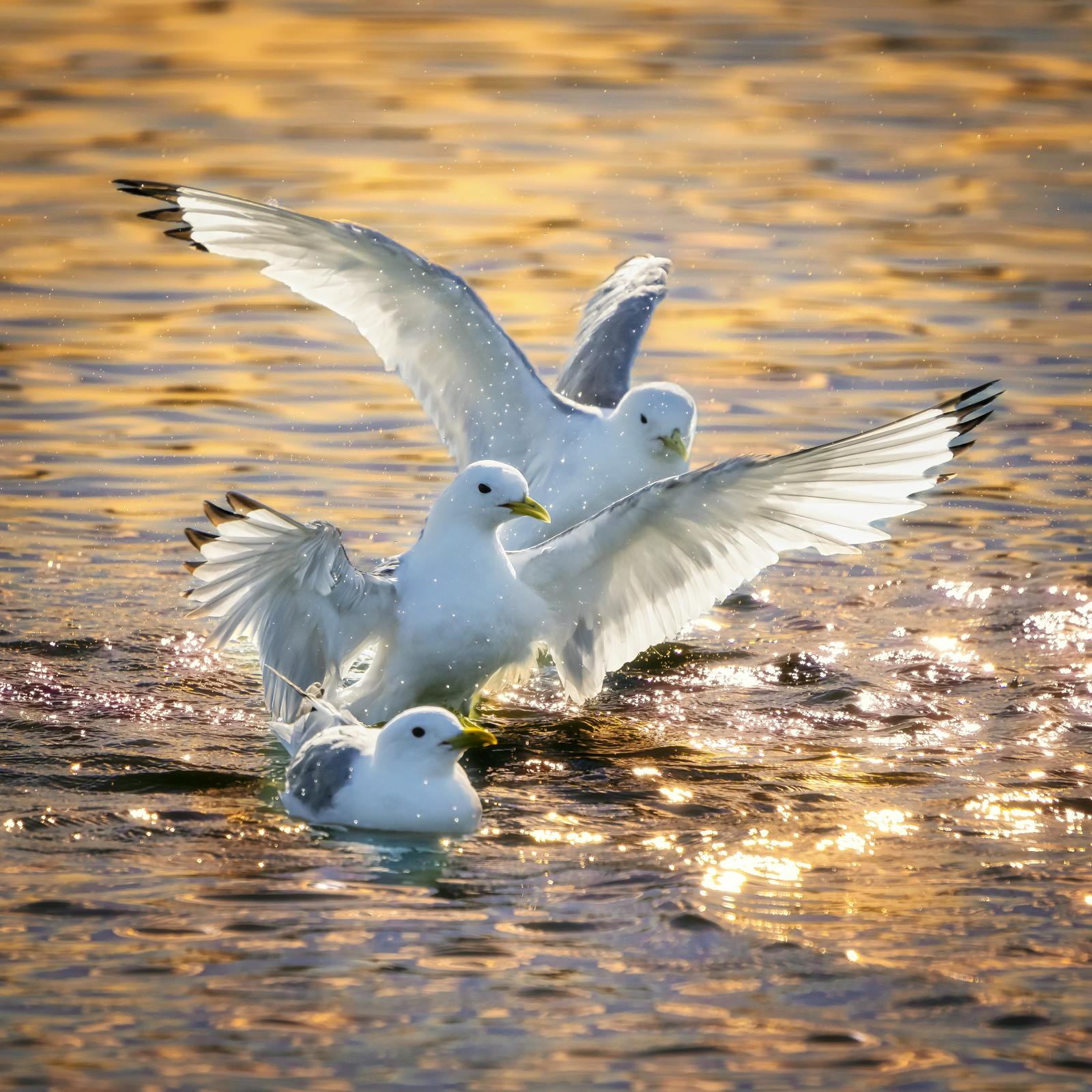
Where Do the Kittiwakes Migrate To?
In fall, when the young start to fly, the kittiwakes leave the bird cliff. Bird markings have shown that the population migrates to two different locations. Juveniles head west to Greenland and Newfoundland, but adults go south some all the way to Africa. A part of the population stays around Iceland all year around and often follows fishing boats at sea.
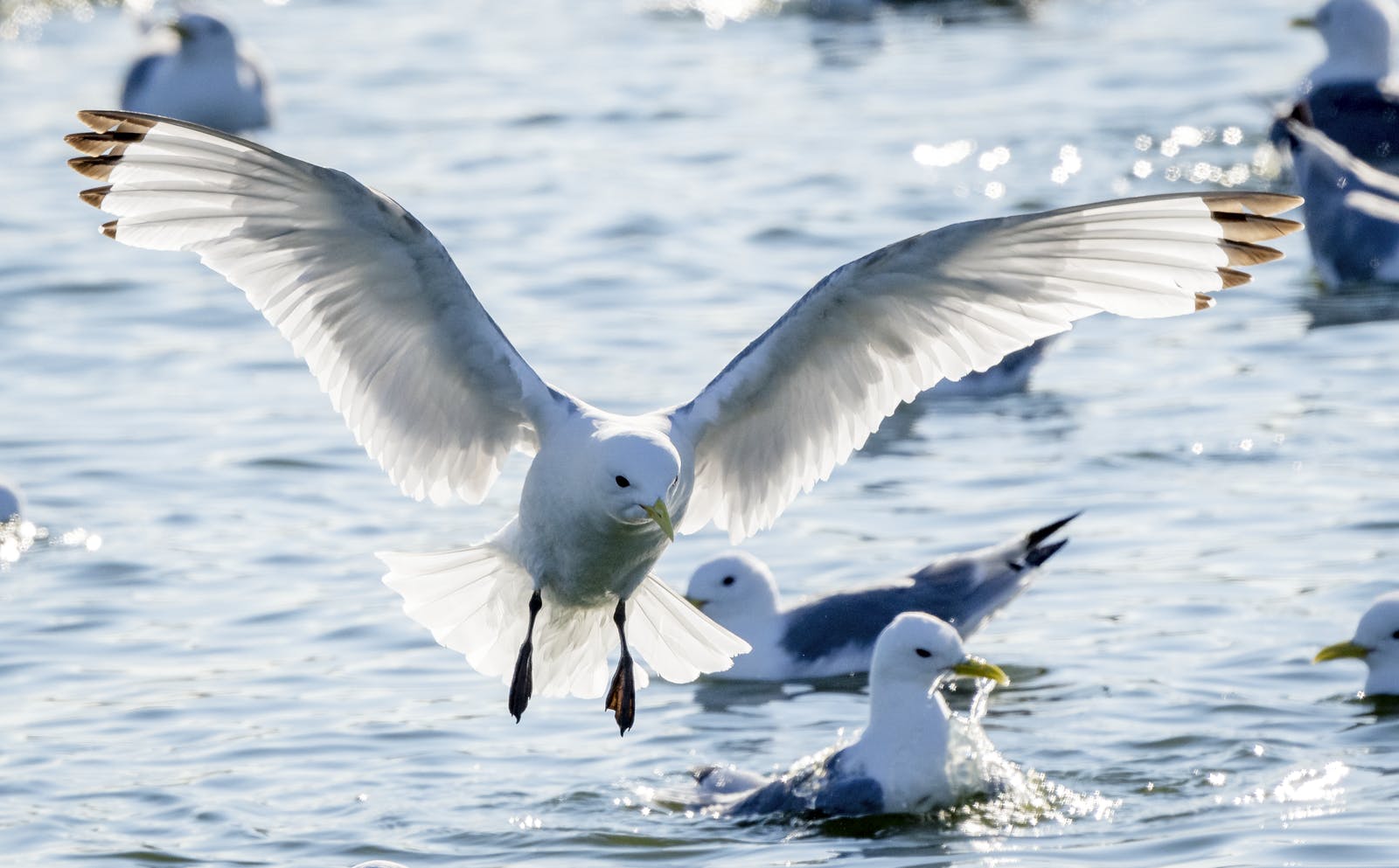
Population Size and Distribution
The kittiwake population in Iceland is very large but has fluctuated in the past years. The population size is estimated to be 580 thousand breeding pairs, where 3 ⁄ 4 of them nest in the 12 biggest bird cliffs. Kittiwake also nests on small islands and islets and is found all around Iceland. The colony is very dense, and the birds are particularly social during the nesting period. A mild murmur sound is often heard from a peaceful colony, but if the birds get upset, they all leave their nests at the same time with a loud shriek.
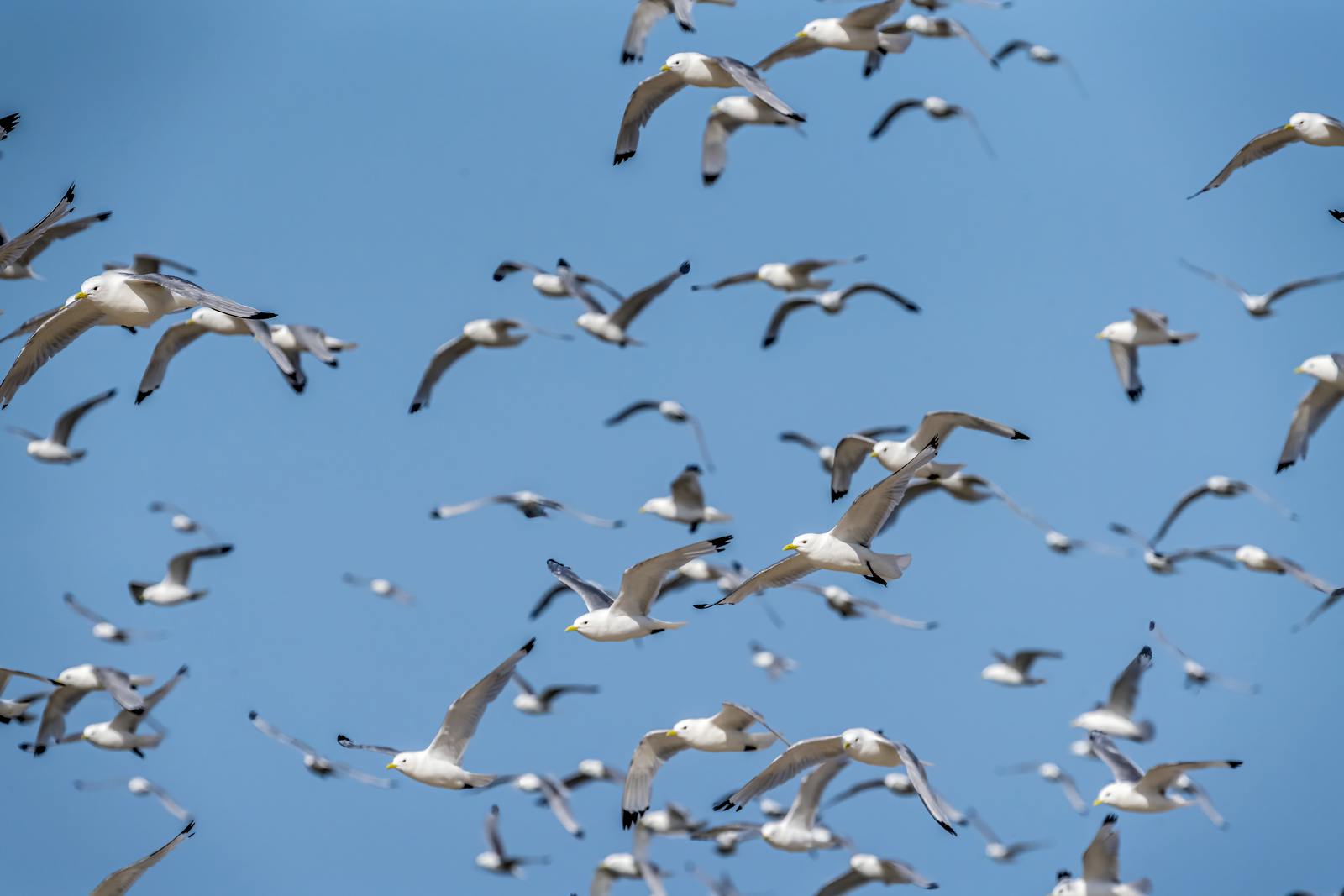
In Iceland, the Kittiwake Has Many Different Names
The popularity of bird species is often in accordance with how many different common names they have. The kittiwake in Iceland has plenty! The „rita“ is also called skegla, rissa, ritsa, rilla and Sigga. Different names have been used in different parts of the country but all of them appeal to the flying style of the bird.
Five Flying Facts About the Black-Legged Kittiwake
- The oldest kittiwake known was 28 years and 6 months old. The average lifespan is about 15 years.
- The eggs of kittiwakes have been used for human consumption in Iceland for years. Each egg weighs about 1.8 oz and is a delicacy. Eggs are still consumed by humans to a small extent.
- The kittiwake can plunge like the tern when feeding but most often it picks the food from the sea surface.
- Kittiwake is a delicate bird and does not fly in harsh weather, but stays at the nest or in shelter elsewhere.
- The main food is sandeels (Ammodytes marinus), chapelin (Mallotus villosus), fish waste and other items that can be picked up from the sea level.







